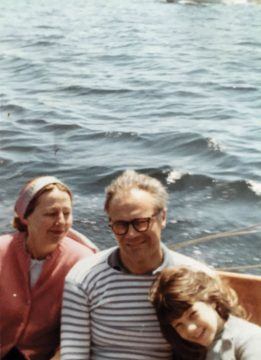Langdon Hammer in The New York Review of Books:

What are a writer’s letters worth? The question, posed bluntly in dollars, plays out in one of the tangled subplots of The Dolphin Letters.
In 1970 Robert Lowell was a visiting fellow at All Souls College, Oxford, and Elizabeth Hardwick was at home in New York with their thirteen-year-old daughter, Harriet. Hardwick felt overwhelmed trying to manage the family’s affairs. “Cal,” she wrote to Lowell, “I can’t cope. I have gotten so that I simply cannot bear it. Each day’s mail and effort grows greater and greater.” Seeing the chance to simplify “a life that has become too weighty, detailed, heavy—for me,” Hardwick undertook to sell Lowell’s papers. SUNY Stony Brook was “wildly interested,” but she favored Harvard because of Lowell’s ties there. He agreed that Stony Brook was second choice, but they were offering more money, and he needed money. Hardwick told Harvard about the Stony Brook offer, the university raised its bid, and after much back and forth, in 1973, Harvard purchased Lowell’s papers dating from his childhood to 1970.
Too much had happened in the meantime for Hardwick to celebrate. When she had first looked into Lowell’s crammed file cabinets, she expected him to come home soon. But he didn’t. He fell in love with the Anglo-Irish writer Caroline Blackwood and remained in England with her, even after he was hospitalized following a manic breakdown in July 1970, and Hardwick came to him while Blackwood fled to Ireland. In 1971 Blackwood and Lowell’s son, Sheridan, was born. A year later, Lowell divorced Hardwick and married Blackwood. Throughout this time, he was writing about being torn between Blackwood and Hardwick in poems that would be published in 1973 as a sonnet sequence called The Dolphin.
More here.
